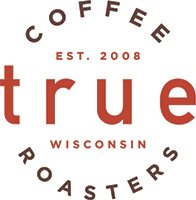Coffee Jargon: Part One
On a first approach, the world of specialty coffee can be an intimidating place full of new concepts, a diverse vocabulary, and the occasional grumpy baristas (they do exist).
You can hear all these terms used by the small ‘Mom & Pop’ cafés, to folks like us in specialty micro/small batch roasting, to the importers/producers, and all the way up to the mega-chain corporations. A problem arises, from time to time, that information passed on to a new consumer is misrepresented or twisted in order to fit the image being sold, rather than using the information honestly. What you get in the end is something like the telephone game, and much confusion ensues when visiting a different coffee provider than your usual spot.
We believe knowledge is power, and that knowing how to talk the talk will help you find the honest ones out there. We have collected information from the coffee overlords (SCA, ICO, WCR, ect.) and our fellow roasters/importers in order to provide you with the True-est of factoids that will make you a specialty coffee buff in no time!
We will start small for this installment, and will aim to get more complex with terms and definitions as we go. Let’s get started!
Natural Process Coffee: Coffee that is left out to dry in the elements (done in various different ways based on region, resources, and culture) that allows the coffee cherry/pulp to dry/ferment around the seeds (coffee beans) before removing the skin, much like fermenting wine grapes for fruitier notes. This allows the seeds to absorb all of the natural flavors from the cherry itself, giving it an interesting, dynamically fruity, and lively taste. This can be seen as a more traditional approach, and with great skill can make for an excellent cup!
Washed Process Coffee: The washed process is a slightly more modern approach to removing the cherry/pulp from the coffee seeds (beans). This method uses small manufactured water-channels to separate the ripe cherries from the unripe, then allows them to soak for a short time to ferment a little, then it is sent flowing through the pulper to separate the cherry/pulp from the seeds (beans). What makes the method stand apart from the Natural Process is how it can control/limit the time the seed has contact with the cherry/pulp, yielding different flavors altogether. This method can be done in a few different ways depending on region, country, and resources. Overall, it produces a nice, clean cup with subtle flavors that make it all the more enjoyable!
Varietals: Like wine, coffee has many different varietals under the one coffee species Arabica, the coffee used specifically in the specialty coffee industry. There are thousands of varietals in this wild world, but for the most part, there is a certain core set that we have domesticated or cross-bred through the centuries that are found most often in your daily cup. They each produce different flavors along with effects, and can taste different from region to region with the ‘taste of place’ factor (again, similar to wine). Some examples include: Typica, Caturra, Bourbon, Catimor, Timor Hybrid, Catuai, and SL-28.

